CoolSculpting in Egypt
Search and Compare the Best Clinics and Doctors at the Lowest Prices for CoolSculpting in Egypt
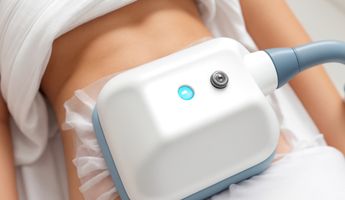
Find the best clinics for CoolSculpting in Egypt
No clinics available
Thailand offers the best prices Worldwide
Price: $ 111

- Home
- Egypt
Compare Before & After Photos of _procedure_photos.phpCoolSculpting
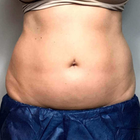

Front view


Front view
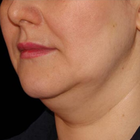
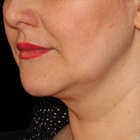
Half-side view
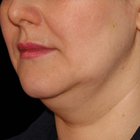
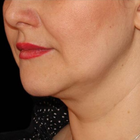
Half-side view
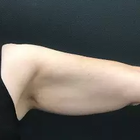
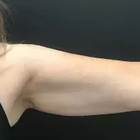
Front view
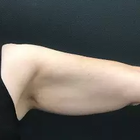
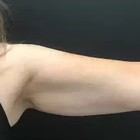
Front view

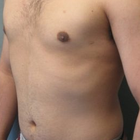
Half-side view

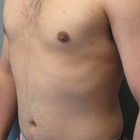
Half-side view

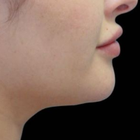
Full-side view

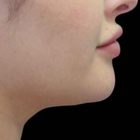
Full-side view
WHY US?
At Medijump, we're making medical easy. You can search, compare, discuss, and book your medical all in one place. We open the door to the best medical providers worldwide, saving you time and energy along the way, and it's all for FREE, no hidden fees, and no price markups guaranteed. So what are you waiting for?

Free

Best Price

Widest Selection

Risk-Free
What you need to know about CoolSculpting in Egypt

CoolSculpting, also known as cryolipolysis, is a popular non-surgical fat reduction procedure that uses a form of controlled cooling to remove stubborn fat deposits that have not responded to traditional diet and exercise. It is FDA-cleared for removing fat cells from the abdomen, flanks, and thighs without surgery or downtime. In Egypt, many patients opt for CoolSculpting because it allows them to resume their normal activities immediately after the procedure.
The CoolSculpting procedure essentially works by freezing unwanted fat cells, causing them to die and be naturally eliminated by the body over time. One of the notable things about the procedure is that it does not involve any cuts, anaesthesia, or significant downtime. Unlike liposuction, CoolSculpting is not a weight-loss solution, but rather a body contouring procedure, it's ideal for reducing small, localized fat bulges. So despite being a less invasive alternative, the procedure might not offer the extensive fat reduction that surgeries often deliver.
What is the cost of CoolSculpting in Egypt?
When calculating the cost for a CoolSculpting procedure in Egypt, remember that several aspects factor into the calculation. The final price is governed by specifics like the regions you wish to target, the number of treatment rounds you need, and the particular location. To give a ballpark figure, people often spend from "$500 through $4,000 per each treatment round". Please take note, these values serve as a guide, and the individual's specific goals and the treatment plan can alter the final cost.
Various clinics in Egypt do offer provisions for financing to lighten the burden. Periodically, they might also extend promotional campaigns to offer more affordability. Even with cost being a major factor to consider, it's equally important to count in the level of expertise of the practitioner performing the procedure, along with ensuring the safety and efficacy of the treatment.
For a more defined estimate of costs that covers your personal treatment plan, we encourage you to set up a direct consultation with a CoolSculpting professional.
What does a CoolSculpting Procedure Involve?
During a CoolSculpting process, a trained professional starts by marking the specific area on your body for treatment, followed by the application of a gel pad that acts as a protective layer between your skin and the cooling panel of the device. They then use a uniquely designed applicator, functioning much like a vacuum, to gently draw your skin into its cup. This can create a feeling akin to mild pinching, tugging, or pulling. On top of that, CoolSculpting does not involve any incision, stitches, or anaesthesia.
Next, the actual cooling mechanism activates, which can cause a numbing effect on the part of your body being treated. The principle guiding CoolSculpting revolves around the controlled cooling of fat cells beneath the skin, essentially freezing them off. It's significant to highlight that while the fat cells reach the freezing point and get altered, the skin, as well as other adjacent tissues, remain unaffected. This is due to fat cells having a higher freezing temperature.
As the procedure continues, patients can stay relaxed, read, handle emails or even take a brief nap. Typically, each area's session lasts anywhere between 35-60 minutes, and this time frame varies according to the treatment area size.
How Long Should I Stay in Egypt for a CoolSculpting Procedure?
Thanks to the non-invasive nature of CoolSculpting in Egypt, patients are normally free to resume their usual activities directly after treatment. Every CoolSculpting session generally ranges from 35 to 60 minutes, allowing you to effectively integrate it into your day, perhaps during a lunch break, and return to your routine immediately afterward. Therefore, if you're considering travelling to Egypt for the procedure, there's no need for an extended stay.
That said, depending on the number of treatment areas, your healthcare provider may suggest multiple sessions. If this is the case, you may consider a short stay of a few days in Egypt for convenience and easy access to your appointments. As with any medical procedure, it's beneficial to discuss these logistics with your chosen clinic or specialist ahead of time.
What's the Recovery Time for CoolSculpting Procedures in Egypt?
One of the unique attributes of CoolSculpting is that there's virtually no recovery time necessary. Unlike surgical procedures, CoolSculpting in Egypt is completely non-invasive, causing minimal discomfort during and after the treatment. Patients commonly return to work, hit the gym, or carry on with their regular activities right after their appointment.
However, it's normal to experience minor side effects such as redness, swelling, bruising, or sensitivity in the treated area. These symptoms are temporary and typically resolve within a few days or weeks. Always consult with your healthcare provider for a personalized post-treatment plan. Keep in mind that results from CoolSculpting aren't immediately discernible, final results are typically visible after two to three months.
What's the Success Rate of CoolSculpting Procedures in Egypt?
With a high satisfaction rate of 82%, CoolSculpting is making a positive impact in the world of non-surgical fat reduction. Isn't it impressive when people have such great experiences that they recommend it to their pals? That's the power of CoolSculpting! Research shows us that just one CoolSculpting session can knock off between 20% to 80% of fat in the treated area. While some individuals hit their body goals at one go, others might need a couple of rounds to knock out that stubborn fat. Keep in mind, however, the fruits of your CoolSculpting session take a bit of time to show - think of it like planting a seed and watching it grow. You'll start noticing changes from the fourth week, and by two months, you'll see the most striking results.
Of course, while CoolSculpting is usually safe, it's only fair to let you know about potential side effects, even though they're pretty rare. We're talking temporary aches, cramps, stinging, bruising, some skin redness, itching, and even a bit of a tingly feeling. In rarer cases, you could see an increase in fat cells, a condition known as paradoxical adipose hyperplasia.
Ultimately, we're all unique, and how our bodies respond to treatments like CoolSculpting can also be different. If you're considering CoolSculpting, having a chat with a certified provider can work wonders. They can give you the lowdown on the process, set your expectations right, and see how the treatment can help you meet your body goals.
Are there Alternatives to CoolSculpting Procedures in Egypt?
Indeed, if you're contemplating non-surgical or surgical body contouring methods in Egypt, you have options other than CoolSculpting. Bear in mind, that every person is unique, and alternatives should be considered based on your specific concerns, health condition and personal goals.
Among the non-surgical alternatives to CoolSculpting are:
- SculpSure: This treatment uses controlled laser technology to destroy fat cells by heating them.
- UltraShape: This method employs ultrasound technology for body contouring, reducing unwanted fat cells.
As for surgical alternatives, consider:
- Liposuction: A surgical procedure that removes fat deposits directly.
- Abdominoplasty (Tummy Tuck): This process primarily removes excess skin and fat from the abdomen and tightens the abdominal muscles.
Each of these options presents its own set of benefits and potential drawbacks. For instance, while surgical methods like liposuction and abdominoplasty often deliver more substantial results, they are more invasive and come with extended recovery periods and potential risks.
It's advisable to consult with a trusted healthcare professional to discuss these alternatives alongside CoolSculpting. Together, you can decide which option best aligns with your individual expectations and needs.
What Should You Expect Before and After the CoolSculpting Procedure?
Before the CoolSculpting procedure, your healthcare provider in Egypt will conduct a thorough consultation during which they'll review your medical history and perform a physical examination. Additionally, they'll use this time to discuss your expectations, explain the process, and create a tailor-made treatment plan. On the day of the procedure, the applicator delivers precisely controlled cooling to the targeted fat cells. Patients may feel an initial sucking sensation followed by cooling, but many people read, work on laptops or even nap during the session. After the applicator is detached, the provider will briefly massage the area to break up the treated fat cells and enhance fat reduction. Post-procedure, the treated area may seem somewhat reddened, tender, swollen, or bruised, but these are temporary and expected. These side effects should subside within a few weeks. You can usually resume regular activities immediately without any recovery period.
What sort of Aftercare is Required for CoolSculpting Procedures in Egypt?
Post-treatment care for CoolSculpting procedures in Egypt is typically uncomplicated, mirroring a significant perk of the treatment – a zero downtime recovery. This feature allows patients to promptly return to their regular routines. However, like every medical procedure, patients could experience short-lived side effects, such as slight redness, mild swelling, some bruising or increased sensitivity in the treated area. But these are mostly temporary and recede within a few weeks. Keep in mind that individual reactions can vary and everyone's body may respond differently after treatment.
In addition to dealing with any minor side effects, aftercare emphasizes the critical role of a balanced lifestyle. Upholding a healthy diet along with regular exercise is not just vital for enhancing and sustaining the CoolSculpting results, but it also bolsters overall well-being. Remember, although CoolSculpting permanently eradicates certain fat cells, it does not prevent possible weight gain leading to expansion of the existing fat cells. Scheduled follow-up visits with your healthcare provider forms a key part of the journey, aiding in monitoring progress and ensuring proper healing. In essence, a commitment to healthy living is the cornerstone of optimal aftercare following CoolSculpting procedures in Egypt.
Is the CoolSculpting procedure safe?
Absolutely, CoolSculpting by and large enjoys a reputation as a safe treatment modality. It has received the thumbs up from the FDA in the United States for its effectiveness in reducing fat in designated areas of the body. Being a non-invasive procedure, it brings down the chances of complications and risks quite significantly when contrasted with other intrusive fat-reduction methods such as liposuction.
Regardless, it's prudent to remember that even the safest of procedures could cause mild side effects. With CoolSculpting, you might experience gentle redness, sensitivity, swelling or even bruises in the area of treatment. Such occurrences are typically short-lived, receding within a few weeks.
Before the initiation of any therapeutic intervention, including CoolSculpting, it's of utmost importance to hold comprehensive discussions with your healthcare provider about any concerns or risks to make a fully informed decision.
CoolSculpting v's Liposuction
Liposuction, although highly effective, is an invasive procedure that requires small incisions for the introduction of a cannula, a thin tube used to dislodge and suction fat. Due to its surgical nature, it unavoidably leaves behind minimal scarring, though the size of these scars is typically tiny and often inconspicuous. Moreover, the procedure necessitates some form of anaesthesia, either local or general. This contributes to an extended recovery period in the subsequent weeks, during which patients may experience discomfort and temporary restrictions in physical activities.
Conversely, CoolSculpting offers a unique advantage as a non-invasive treatment. It does its work quietly in the background, destroying fat cells which are gradually expelled by the body naturally over time, resulting in nearly instantaneous recovery. Patients can return to their routine activities immediately after each treatment. However, pricing for CoolSculpting is typically per site treated, and depending on the amount of fat, an individual may need 1-3 sessions per site, which can add up. Therefore, when there are multiple areas of concern, liposuction could potentially be a more economical choice.
Remember, it's just as essential to consider the safety, effectiveness and long-term benefits of both options as it is to consider cost and recovery time factors. Always consult a healthcare provider to discuss your specific goals and find the most suitable treatment method for you.
Whilst the information presented here has been accurately sourced and verified by a medical professional for its accuracy, it is still advised to consult with your doctor before pursuing a medical treatment at one of the listed medical providers
No Time?
Tell us what you're looking for and we'll reachout to the top clinics all at once
Enquire Now

Popular Procedures in Egypt
Prices Start From $120

Prices Start From $931

Prices Start From $76

Prices Start From $236

Recommended Medical Centers in Egypt for procedures similar to CoolSculpting

- Interpreter services
- Translation service
- Religious facilities
- Medical records transfer
- Medical travel insurance
- Health insurance coordination
- TV in the room
- Safe in the room
- Phone in the room
- Private rooms for patients available

- Interpreter services
- Translation service
- Religious facilities
- Medical records transfer
- Medical travel insurance
- Health insurance coordination
- TV in the room
- Safe in the room
- Phone in the room
- Private rooms for patients available

- Interpreter services
- Translation service
- Religious facilities
- Medical records transfer
- Medical travel insurance
- Health insurance coordination
- TV in the room
- Safe in the room
- Phone in the room
- Private rooms for patients available

- Interpreter services
- Translation service
- Religious facilities
- Medical records transfer
- Medical travel insurance
- Health insurance coordination
- TV in the room
- Safe in the room
- Phone in the room
- Private rooms for patients available

- Interpreter services
- Translation service
- Religious facilities
- Medical records transfer
- Medical travel insurance
- Health insurance coordination
- TV in the room
- Safe in the room
- Phone in the room
- Private rooms for patients available

- Interpreter services
- Translation service
- Religious facilities
- Medical records transfer
- Medical travel insurance
- Health insurance coordination
- TV in the room
- Safe in the room
- Phone in the room
- Private rooms for patients available

- Interpreter services
- Translation service
- Religious facilities
- Medical records transfer
- Medical travel insurance
- Health insurance coordination
- TV in the room
- Safe in the room
- Phone in the room
- Private rooms for patients available

- Interpreter services
- Translation service
- Religious facilities
- Medical records transfer
- Medical travel insurance
- Health insurance coordination
- TV in the room
- Safe in the room
- Phone in the room
- Private rooms for patients available

- Interpreter services
- Translation service
- Religious facilities
- Medical records transfer
- Medical travel insurance
- Health insurance coordination
- TV in the room
- Safe in the room
- Phone in the room
- Private rooms for patients available

- Interpreter services
- Translation service
- Religious facilities
- Medical records transfer
- Medical travel insurance
- Health insurance coordination
- TV in the room
- Safe in the room
- Phone in the room
- Private rooms for patients available
CoolSculpting in and around Egypt
About Egypt
Egypt is a spectacular fusion of splendid beaches, diverse wildlife, delectable cuisine, and a consistently sunny climate. Its historical significance is rooted deeply in Ancient Egypt - one of the most influential and fascinating civilizations to have ever existed. Journey back into the corridors of time as you visit Egypt's famous architectural wonders such as the iconic Pyramids of Giza and the historically rich Valley of the Kings.
With every twist and turn along the River Nile, brace yourself for a captivating journey into the past, and lose yourself in the labyrinth of bustling bazaars. Egypt invites you to revel in the architectural grandeur of some of its most renowned temples, be awed by the commanding presence of the Sphinx, and acquaint yourself with the distinct Nubian culture. Egypt presents an intriguing mélange of timeless history, vibrant cultures and stunning natural beauty.
One of the unique advantages of considering cosmetic surgery in Egypt is that it allows you to pair your medical trip with a satisfying holiday, all at a price that would typically cover only the surgery in many developed nations. Many top-notch clinics are concentrated in Cairo, the capital. However, there are also excellent private medical facilities in Heliopolis, Zamalek, Maadi, and Gizeh. Eleven of these are accredited by the Joint Commission International (JCI), vouching for their high quality of services.
The bulk of the medical tourists in Egypt come from other Arabic-speaking nations and across the African continent, drawn in by the affordability and expertise on offer. Particularly, CoolSculpting procedures have gained notable popularity, further consolidating Egypt's position as a favorable destination for medical tourism.
Popular Parts of Egypt
Currently, Egypt is home to over 95 million inhabitants, securing its place as the most populous country in North Africa and standing third in terms of population across Africa. With its majestic historical landmarks, the sweeping expanse of the Nile, and the captivating allure of its deserts, Egypt extends an open invitation to all who seek to explore the grandeur of the ancient world. This fusion of history and natural beauty offers a unique landscape that continues to enchant millions of global citizens, making Egypt a must-visit destination.
- Cairo is the capital of Egypt as well as the largest city in the country and it is a perfect blend of ancient and modern culture. Visitors from all over the world come to see the Great Pyramid of Giza, the iconic Sphinx, or the magnificent tomb of Tutankhamun. Modern attractions such as its countless museums and busy markets are also popular with tourists.
- Luxor has frequently been called the world’s greatest open-air museum. Tourists can visit the Valley of the Kings, wander around the Temple of Dier el-Bahari, or discover the beauty of the Karnak Temple. Not only home to the extraordinary temple ruins of ancient Thebes, but this city also lies in a breathtaking setting of the Nile River and astonishing desert. Tourists should complete their visit to this beautiful city by taking a sunset felucca cruise on the Nile River.
- Alexandria is a major economic center and the second-largest city in Egypt. The city has an impressive and interesting past, which began when Alexander the Great founded the city around 331 BC and it was home to the Pharos and the Great Library. Now, although the legendary buildings have disappeared, tourists can still learn about its past from the Alexandria National Museum, Bibliotheca Alexandrina, Kom el-Dikka, and Fort Qaitbey. Tourists can also relax in The Corniche, a scenic promenade overlooking the beautiful sea.
- Aswan is located in the south of Egypt. It is part of the UNESCO Creative Cities Network in the craft and folk art category. The city is a major destination for cruise boats on the River Nile, making it a favorite place for tourists. The local market in this city is known to be a superb place for holiday shopping, especially for those looking for fresh spices. The most popular attractions in or around the city are Sharia as-Souq, Nubian Museum, Unfinished Obelisk, Abu Simbel, and Philae Temple.
- Sharm El Sheikh is situated on the coastal strip along the Red Sea. The city is the perfect beach gateway and is known for its outstanding beaches and some of the best dive spots in the world with a stunning coral reef. Dive into the crystal clear water and encounter schools of sharks, moray, and barracuda. Other than the underwater scenery, tourists can explore the Sinai desert by camel, take a tour to Saint Catherine’s Monastery, or relax in the Red Sea Resort.
Weather and Climate in Egypt
Characterized mainly by a sweltering desert climate, Egypt remains significantly dry throughout, apart from its northern areas along the Mediterranean Sea. These northern regions break from the norm, being comparatively more humid and receiving the lion's share of the country's annual rainfall, offering a contrasting picture to Egypt's otherwise arid landscape.
Summer in Egypt exhibits average temperatures hovering around 35 °C, but there can be instances where temperatures escalate beyond 40 °C. These extreme temperature spikes are often accompanied by increased levels of humidity, intensifying the overall heat experience during the country's summer months.
Winter ushers in a pleasant climate, making it a popular time for tourists, although it results in crowded tourist spots and slightly higher costs. Cities like Alexandria may receive occasional showers, contributing to increased dampness during this season.
Winter is recognized for being Egypt's breeziest season. During this time, daytime temperatures typically float around a comfortable 20°C. When night descends, the temperature can drop further towards 10°C, introducing a gentle chill. Mindfully sandwiched between the country's dominant hot desert climate, this period offers a refreshing contrast as it unveils Egypt's mild winter chill.
Getting Around in Egypt
There are several international airports in Egypt: Cairo International Airport, Burg Al Arab Airport, Hurghada Airport, Luxor Airport, Marsa Alam Airport, and Sharm El Sheikh International Airport. The main and the busiest airport is Cairo International airport which serves both domestic and international flights to Asia and Europe. The airport is the hub for Egypt Air, Egypt Air Express, and Nile Air. Budget airlines such as Flynas and FlyEgypt also operate flights from this airport.
Egypt has a dependable and efficient public transport network and tourists can travel by rail which covers a limited network of routes. Trains travel is the best option for long-distance travel and there are air-conditioned trains that offer a more comfortable option. But if you are looking for a cheaper alternative, a non-air-conditioned economy class is also available.
If you're looking for a budget-friendly and swift mode of travel, buses present an ideal choice. Primarily employed for longtrips, these buses conveniently link major cities across the country. Tickets for these bus journeys can be conveniently secured at the Cairo Gateway bus terminal, making it an easily accessible option for tourists interested in exploring the breadth of Egypt.
Taxis and Uber are available in most cities, providing easier travel for tourists. In Cairo, the taxis are painted white and black. In Alexandria, the taxis are painted orange and black. The taxis are generally metered but there are also taxis that will refuse to use the meters. Tourists should insist on using the meter or agree on a fare before getting into one. Long-distance group taxis are also available and are relatively cheap and be sure to agree on the fares and bargain if necessary.
Tourist Visas in Egypt
Every traveler planning a visit to Egypt needs a visa, barring citizens from visa-exempt countries such as Bahrain, Hong Kong, and Saudi Arabia who are allowed to stay for up to 90 days without one.
A Visa-on-Arrival service, which simplifies the process, is available to several nationalities, including Australia, Japan, Russia, and all European Union citizens. This Visa-on-Arrival is valid for an initial 30 days but can be extended for another 30 days if needed. These visa policies aim to facilitate easier and regulated travel to and from Egypt.
For citizens of 46 countries, which includes major nations such as the United States, Canada, and the United Kingdom, an electronic visa is easily available. The e-Visa, valid for a 30-day period, can conveniently be applied for and obtained online via the official Egyptian government's website.
For all other nationals who don't fall under the visa exemption agreement, visa on arrival, or electronic visa categories, a visa application must be filed at their nearest Egyptian embassy or consulate. This makes the process of securing a visa to Egypt more streamlined and accessible, ensuring a smooth travel experience for visitors.
Additional information about the Visas:
- All visitors to Egypt must have a passport valid for at least six months beyond their intended date of departure from Egypt.
- Visitors who obtain a visa on arrival or an e-Visa must pay a visa fee. The visa fee varies depending on your nationality.
- Visitors who apply for a visa at an Egyptian embassy or consulate may also need to provide additional documentation, such as a proof of onward travel or a letter of invitation.
Additional Information
- Local Currency: The local currency is the Egyptian pound (EGP). 1 USD will get you 30.90 EGP.
- Money & Payments: ATMs are available in major cities, but if you are planning to go to remote places, prepare to bring cash with you. Credit cards are accepted in the midrange and high-end restaurants, hotels, and shops. Tipping is generally expected everywhere.
- Local Language: There are various languages spoken in Egypt. The official language is Classical Arabic but the most widely spoken language is Egyptian Arabic. Since the county was occupied by the British from 1882 to 1952, many people will speak English.
- Local Culture and Religion: Islam is the state religion of Egypt. There are also small groups of Christian and Jews.
- Public Holidays: Egypt celebrates religious and national holidays including Coptic Easter Sunday, Christmas Day, End of Ramadan, and Revolution Day.
Popular Searches
- Plastic Surgery in Thailand
- Dental Implants in Thailand
- Hair Transplant in Thailand
- Breast Augmentation Thailand
- Gastric Sleeve in Thailand
- Gender Reassignment Surgery in Thailand
- Laser Hair Removal in Bangkok
- Botox in Bangkok
- Dermatology in Bangkok
- Breast Augmentation in Bangkok
- Coolsculpting in Bangkok
- Veneers in Turkey
- Hair Transplant in Turkey
- Rhinoplasty in Turkey
- Stem Cell Therapy in Mexico
- Rhinoplasty in Mexico
- Liposuction in Mexico
- Coolsculpting in Tijuana
- Rhinoplasty in Korea
- Scar Removal in Korea
- Gastric Sleeve in Turkey
- Bone Marrow Transplant in India
- Invisalign in Malaysia
- Plastic Surgery in the Dominican Republic
- Tummy Tuck in the Dominican Republic
- Plastic and Cosmetic Surgery in Poland
- Rhinoplasty in Poland
- Hair Implant in Poland
- Dental Implants in Poland
- IVF in Turkey